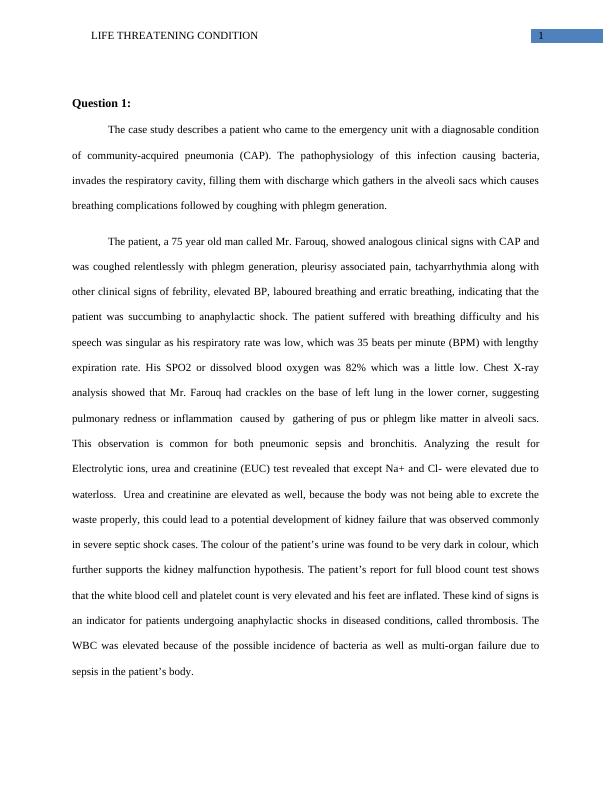Life Threatening Condition - Case Study Analysis and Nursing Care Plan
Marking criteria and standards: Assessment 2: In-Class Short Answer Questions
4 Pages918 Words314 Views
Added on 2023-06-14
About This Document
This case study analysis discusses the pathophysiology of community-acquired pneumonia and anaphylactic shock. It also provides a nursing care plan for the patient. The article also explains the ABG analysis and the reasons behind the patient's low pH. The article is relevant for nursing and medical students.
Life Threatening Condition - Case Study Analysis and Nursing Care Plan
Marking criteria and standards: Assessment 2: In-Class Short Answer Questions
Added on 2023-06-14
ShareRelated Documents
End of preview
Want to access all the pages? Upload your documents or become a member.
Assignment on Pneumonia PDF
|5
|1114
|74
Case Studies in Pathophysiology
|5
|1291
|53
Nursing Case Study - Clinical manifestation of pneumonia among older patient
|11
|3699
|64
Case Study: Pneumonia
|11
|3456
|2
Septic Shock: Symptoms, Nursing Interventions and Priority of Care
|11
|2839
|202
Acute and Life Threatening Life Conditions
|8
|2154
|78


